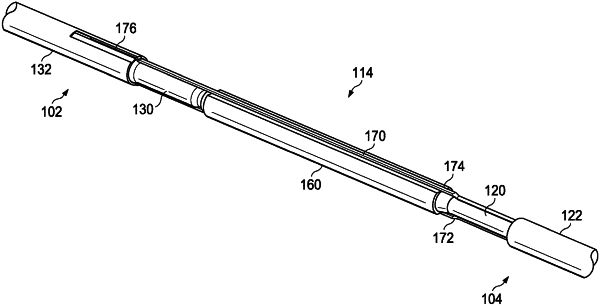| CPC A61B 5/6851 (2013.01) [A61B 5/027 (2013.01); A61B 5/0215 (2013.01); A61B 2562/12 (2013.01); A61B 2562/227 (2013.01)] | 14 Claims |

|
1. An intravascular device, comprising:
a guide wire comprising:
a proximal core comprising a first end section;
a distal core comprising a second end section coupled to the first end section at a first location; and
an outer layer disposed around the proximal core;
a connector disposed at a proximal portion of the guide wire;
a sensor disposed at a distal portion of the guide wire;
a proximal electrical conductor in electrical communication with the connector, wherein the proximal electrical conductor extends within the outer layer such that the outer layer insulates the proximal core and the proximal electrical conductor, wherein the proximal electrical conductor comprises an unexposed portion completely surrounded by the outer layer; and
a distal electrical conductor in electrical communication with the sensor and coupled to the proximal electrical conductor at a second location to establish electrical communication between the connector and the sensor, wherein the second location comprises an exposed portion of the proximal electrical conductor that is only partially surrounded by the outer layer,
wherein the second location is disposed proximal of the first location,
wherein the distal electrical conductor extends between the sensor and the second location, and
wherein the distal electrical conductor extends across the first location.
|